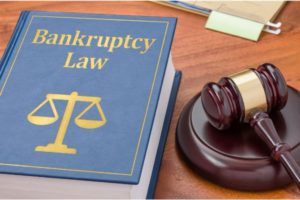The United States Constitution in Article 1, Section 8, Clause 4, authorizes Congress to enact “uniform Laws on the subject of Bankruptcies throughout the United States.” Congress has exercised this authority several times since 1801, most recently with the enactment of the Bankruptcy Reform Act of 1978 codified in Title 11 of the United States Code and the Bankruptcy Abuse Prevention and Consumer Protection Act of 2005 (BAPCPA).
On the one hand, bankruptcy debtors must be familiar with all the federal and state laws that affect a bankruptcy case, especially if they file pro se, that is, without the representation of a lawyer. However, on the other hand, bankruptcy debtors who hire a qualified and experienced bankruptcy attorney may defer to their counsel any questions regarding the meaning, interpretation, and significance of a statute, especially any contained in Title 11 of the United States Code, which lawyers and judges refer to as “The Bankruptcy Code” (the “Code”).
Title 11 of the United States Code is simply entitled “Bankruptcy” and contains nine chapters of statutes that are the source of bankruptcy law in the U.S. Code. The current Code completely replaced the former Bankruptcy Act, the “Chandler Act” of 1938. Title 11 included more chapters in the past, but some have since been repealed entirely. It begins at 11 U.S.C. § 101 and its principal chapters are 7, 11, 12, 13, and 15.
Most people are familiar with bankruptcy terms like Chapter 7, Chapter 11, and Chapter 13. These are types of bankruptcies under the Code, regulated by the chapter applicable to type. Each type of bankruptcy is regulated by other chapters of the Code, but Chapter 7, Chapter 11, and Chapter 13 of the Code apply predominantly to the type of bankruptcy with which each shares its name.
One shortcut to grasping the complexity of the Bankruptcy Code may be gained by reading the Code’s very first section, § 101. Chapter 1 contains general provisions of the Code, including definitions in § 101. Here, terms like “debtor” and “creditor” are defined, which may be very helpful in understanding the Code. Section 102 deals with “rules of construction,” and § 103 addresses the “applicability of the chapters” to a bankruptcy matter.
One of the Morrison Law Group’s qualified and knowledgeable bankruptcy attorneys can answer any bankruptcy debtor’s questions about any relevant bankruptcy law. The Morrison Law Group can also help if you just want to talk about your Chapter 7 or Chapter 13 bankruptcy options. Call 801.456.9933 today to schedule a FREE consultation. We have locations in Ogden, Logan, Sandy, and St. George to serve the residents of the counties of Weber, Cache, Salt Lake, Utah, Morgan, Davis, Washington, and surrounding areas.



